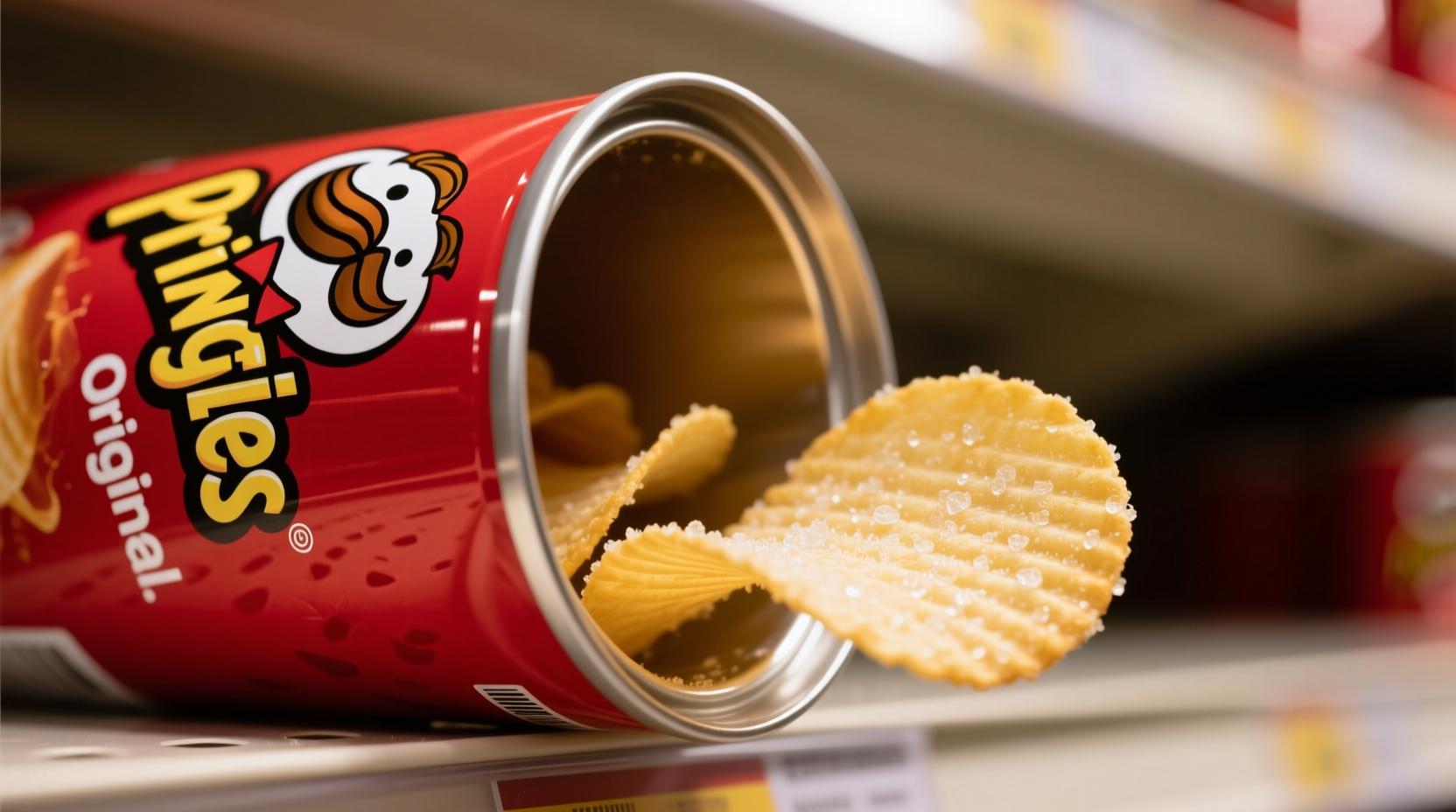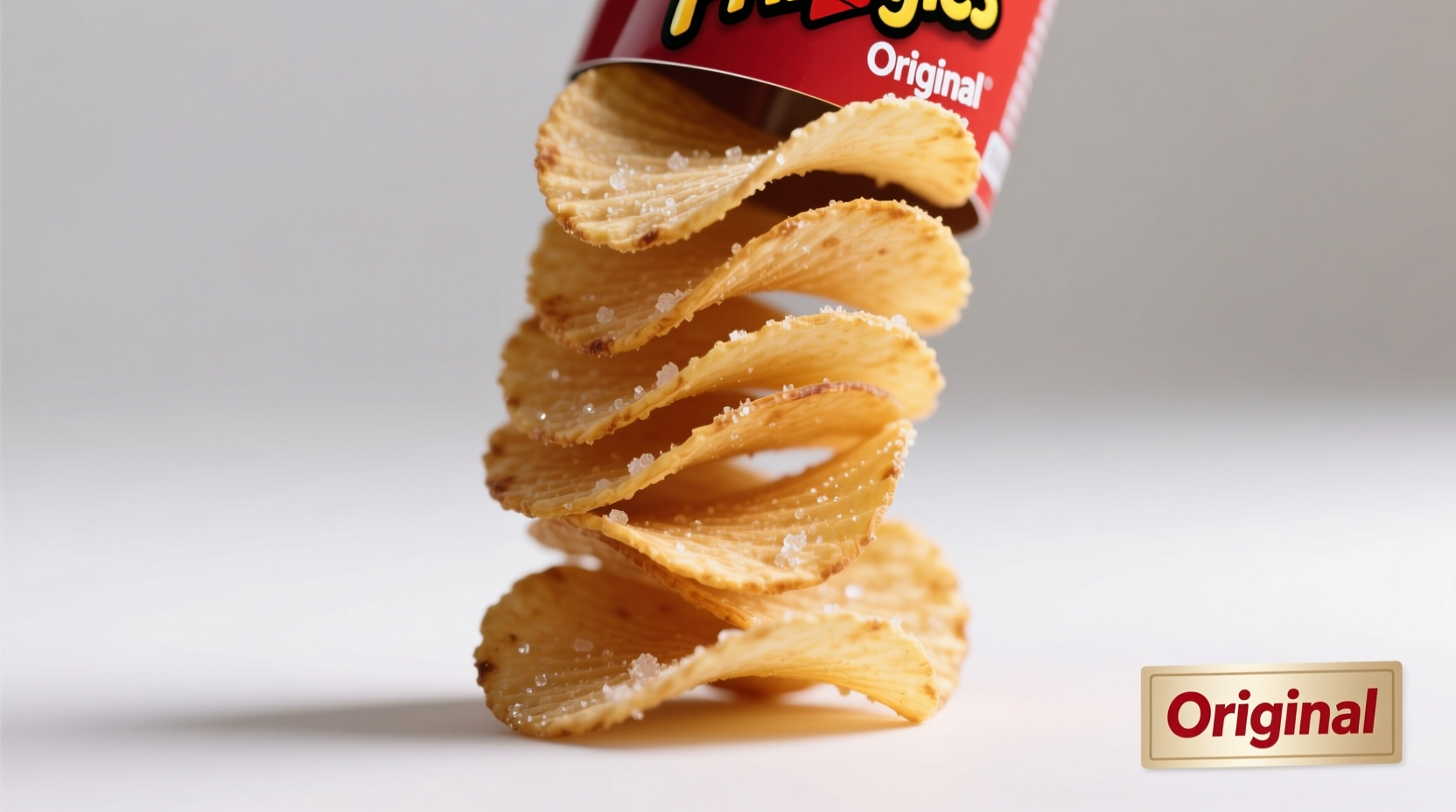The Surprising Truth Behind Pringles Original
When you reach for that iconic red tube of Pringles Original, you're not grabbing traditional potato chips. These perfectly shaped snacks represent a fascinating intersection of food science and marketing innovation. Unlike conventional chips made by slicing and frying whole potatoes, Pringles Original uses a patented process that transforms potato flakes into a homogeneous dough, extruded into uniform discs, then fried and flavored. This manufacturing method solves the biggest problem with regular potato chips: breakage. The consistent shape allows for stable stacking in the distinctive cylindrical container, reducing breakage to less than 1% compared to 25-30% in traditional chip bags.

Pringles Evolution Timeline: From Lab Creation to Global Icon
Understanding Pringles requires examining their remarkable journey from corporate research project to worldwide phenomenon. This timeline reveals how food engineering transformed snack expectations:
- 1967: Procter & Gamble food scientist Fredric J. Baur develops the distinctive saddle-shaped chip and cylindrical container
- 1968: First test market in Omaha, Nebraska under the name "Pringle's Newfangled Potato Chips"
- 1975: Officially renamed "Pringles Potato Chips" despite containing only 42% potato content
- 1991: European Commission rules Pringles cannot be marketed as "potato crisps" due to low potato content
- 2012: Kellogg's acquires Pringles brand from P&G for $2.7 billion
- 2020: Introduction of resealable lid technology improving freshness retention by 40%
What's Really Inside Pringles Original: Ingredient Analysis
The ingredient list tells the real story of why Pringles differ fundamentally from traditional potato chips. According to the FDA's food labeling requirements, Pringles Original contains:
- Dehydrated potatoes (42% by weight)
- Vegetable oils (corn, sunflower, and/or canola)
- Rice flour
- Wheat starch
- Corn flour
- Contains 2% or less of: salt, mono- and diglycerides, natural flavor, butylated hydroxytoluene (BHT) for freshness
This precise formulation creates the signature texture that remains consistent across every chip—something impossible with traditional potato varieties that vary in sugar and moisture content. The controlled manufacturing environment ensures each batch delivers identical flavor and crunch, a major advantage over traditional chips affected by potato harvest variations.
Pringles vs Traditional Potato Chips: Key Differences
| Characteristic | Pringles Original | Traditional Potato Chips |
|---|---|---|
| Manufacturing Process | Extruded from reconstituted potato flakes | Sliced from whole potatoes |
| Shape Consistency | Perfectly uniform saddle shape | Irregular, natural shapes |
| Breakage Rate | Less than 1% | 25-30% |
| Primary Ingredients | Dehydrated potatoes (42%), wheat starch, corn flour | Whole potatoes, oil, salt |
| Shelf Life | 15-18 months | 2-3 months |
Why Pringles Taste Different: The Science of Consistent Flavor
The uniform texture of Pringles Original creates a remarkably consistent flavor delivery system. Because each chip has identical surface area and thickness, the seasoning distributes evenly across every piece. Traditional potato chips vary in thickness and oil absorption, creating inconsistent seasoning coverage. Food scientists at Kellogg's have optimized the Pringles formula to maintain flavor stability across different climates and storage conditions—a critical factor for a product sold in 140+ countries.
According to research published in the Journal of Food Chemistry, the specific ratio of potato flakes to starches in Pringles creates a texture that releases flavor compounds at an optimal rate during chewing, enhancing the perceived saltiness and savory notes without increasing actual sodium content.
Storage and Serving Tips for Optimal Freshness
To maintain that just-opened crunch, follow these evidence-based storage recommendations:
- Always store Pringles upright to prevent chips from settling and breaking
- After opening, press the resealable lid firmly to create an airtight seal
- Keep away from heat sources—temperatures above 75°F accelerate oil oxidation
- For extended storage, transfer remaining chips to an airtight container with a silica packet
- Consume within 2 weeks of opening for peak flavor (though safe for months)
Common Misconceptions About Pringles Original
Several persistent myths surround these engineered snacks. Let's clarify with facts:
- "Pringles are 100% potato" - False. They contain 42% dehydrated potatoes by weight, with the remainder being starches and flavorings
- "Pringles are healthier than regular chips" - Not necessarily. A 1-ounce serving contains similar calories and fat to traditional chips
- "The tube keeps them fresh indefinitely" - While the container reduces breakage, oxidation still occurs after opening
- "Pringles were invented to solve the broken chip problem" - True. Fredric Baur specifically designed the tube to eliminate broken chips
Global Classification Differences: The Potato Content Debate
Pringles' unique composition has created regulatory challenges worldwide. In 2009, the European Court of Justice ruled that Pringles must be labeled as "potato crisps" only in countries where they contain sufficient potato content, while in others they're classified as "snack products." The UK's Advertising Standards Authority determined that Pringles could claim "made from 42% potatoes" but not "potato chips" in advertising. These classification differences highlight how food regulations struggle with engineered snack products that don't fit traditional categories.











 浙公网安备
33010002000092号
浙公网安备
33010002000092号 浙B2-20120091-4
浙B2-20120091-4